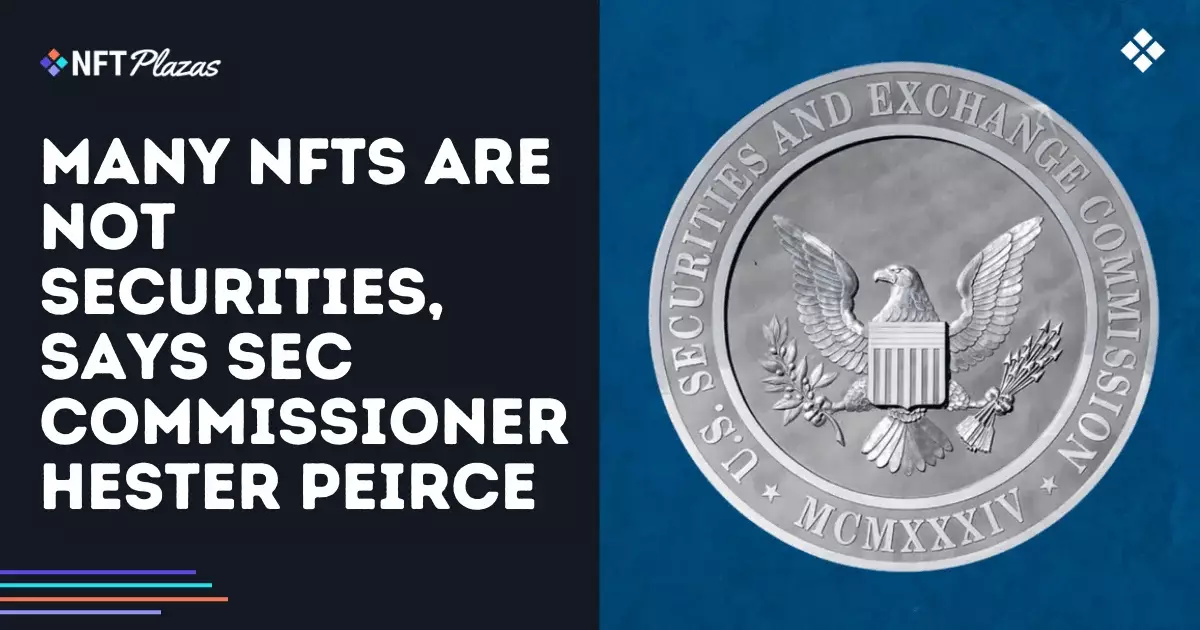In the ever-evolving landscape of digital assets, the classification of Non-Fungible Tokens (NFTs) has sparked significant debate. Recently, SEC Commissioner Hester Peirce threw a spotlight on this issue, suggesting that many NFTs do not fit the legal definition of securities as determined by U.S. law. While her comments at the SEC Speaks 2025 event in Washington, D.C., may seem clarifying at first glance, they also expose the underlying chaos and inconsistencies in regulatory frameworks around digital assets—a situation that has become untenable for innovators in this space.
Commissioner Peirce’s assertion that many NFTs aren’t securities is encouraging, but it does little to resolve the ambiguity. Her cautionary note—that certain NFTs could indeed be classified as securities if marketed as investment contracts—offers little assurance to creators and investors who are navigating a regulatory minefield riddled with enforcement actions and a staggering lack of clear guidelines. By emphasizing the need for a nuanced approach, she unearths a crucial point: the scrutiny should extend beyond asset classification to how these digital tokens are marketed and sold.
A Flawed Approach to Regulation
Peirce’s critique of the SEC’s heavy-handed enforcement strategy lays bare a significant flaw in the regulatory landscape for digital assets. The reliance on punitive measures instead of proactive guidance creates an environment that stifles innovation and breeds uncertainty. This overarching absence of clarity is as detrimental as it is frustrating. If regulations do not evolve to reflect the technological advancements within the NFT market, industries may find themselves hampered by outdated compliance structures, which favor established players and marginalize new entrants.
The idea of a Crypto Task Force is a step in the right direction; however, it risks becoming just another bureaucratic body unless it yields tangible results. There is a desperate need for the SEC to move beyond vague assertions and promote a more structured regulatory environment—one that provides creators the leeway to experiment and develop their projects. The Safe Harbor proposal, allowing a three-year grace period for compliance, reflects an understanding of the challenges faced by new digital asset issuers. Yet, without a commitment to adopt this framework, optimism remains a hollow sentiment.
Time for Legislative Action
Peirce’s calls for clearer guidelines and potential legislative action should resonate not just within the halls of the SEC but in Congress, as well. With technology advancing at lightning speed, the inability to establish a regulatory framework that is adaptive and comprehensive may cost the U.S. its competitive edge in the global digital economy. Digital assets should not be a battleground for rigid interpretations of outdated laws. The categorization of NFTs needs modern approaches that consider technological capabilities and consumer expectations.
In an environment where more than half of NFTs might not be classified as securities, the pressing need for clearer regulatory definitions cannot be overstated. The current landscape lacks firm demarcations, drowning both investors and creators in ambiguity. Only when definitive regulations are articulated will confidence return, fueling creativity and sustainable growth in this exciting yet precarious domain.

